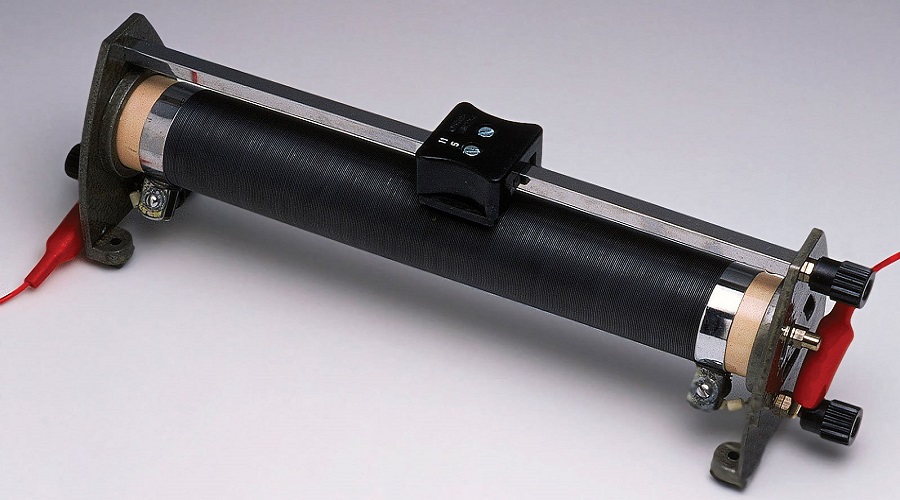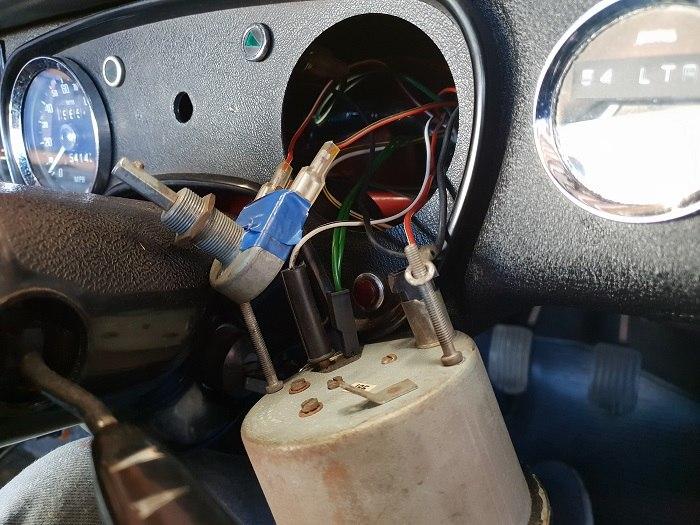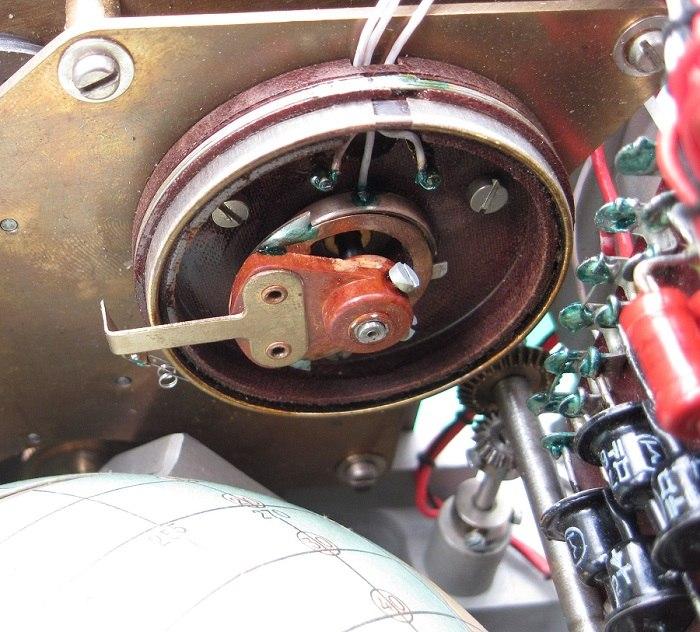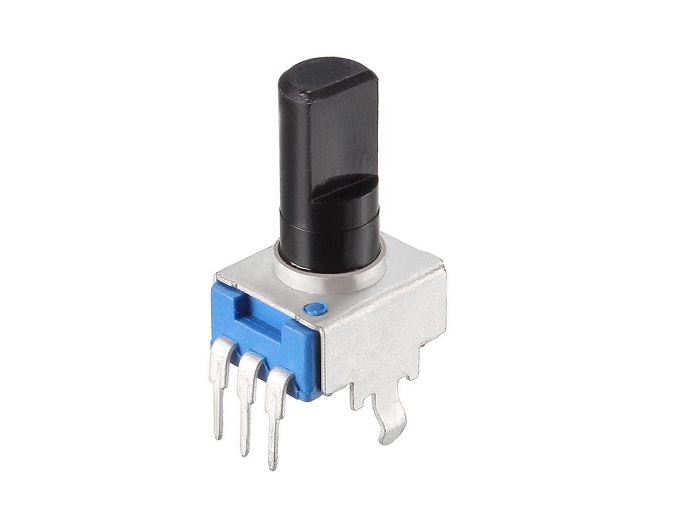As you may know, Resistors are common elements of electrical networks and electronic circuits and are ubiquitous in electronic equipment. Variable resistors are the resistors whose resistance value can be varied. In some electrical circuits sometimes it is necessary to change the values of currents and voltages. For example, it is often necessary to change the volume of sound and brightness in TV, the volume of sound and tone in radios, and to regulate the speed of a fan. Such adjustments can be done by using variable resistors. In this article, we will discuss the variable resistor function. Read this new blog in Linquip to find out more.
Variable Resistor Definition
A variable resistor is a resistor of which the electric resistance value can be adjusted. A variable resistor is in essence an electro-mechanical transducer and normally works by sliding a contact (wiper) over a resistive element. As the resistance increases in the variable resistor the current through the circuit decreases and vice versa. They can also be used to control the voltage across devices in a circuit too. Therefore, in applications where current control or voltage control is needed, these types of resistors come handy.
When a variable resistor is used as a potential divider by using three terminals it is called a potentiometer. When only two terminals are used, it functions as a variable resistance and is called a rheostat. Electronically controlled variable resistors exist, which can be controlled electronically instead of by mechanical action. These resistors are called digital potentiometers.
Variable Resistor Characteristics
The most important characteristic of a variable resistor is given by the relation between the mechanical position of the moving terminal and the resistance ratio. It is marked on the resistor as its taper. Mostly two types of taper are marked, namely linear and logarithmic taper. Linear taper indicates that the relation between the two is linear, meaning the resistance ratio will be directly proportional to the mechanical position. This when drawn in a graph, will have a straight line with a constant slope.
The other type of taper is the logarithmic taper. This means the relationship between the mechanical position and the resistance ratio is logarithmic when plotted in a graph. The resistors with this type of taper are mostly used in audio control.
There’s another important characteristic of a variable resistor which one needs to know before choosing a resistor for a specific application. It is known as the resolution of the resistor. The resolution is nothing but the smallest value of resistance through which a variable resistor changes. A variable resistor with a resolution 0.005 means, that the smallest value by which the resistance changes is 0.005 ohm. A high resolution is a favorable characteristic of a variable resistor.
Variable Resistor Function
A variable resistor consists of a track which provides the resistance path. Two terminals of the device are connected to both the ends of the track. The third terminal is connected to a wiper that decides the movement of the track. The motion of the wiper through the track helps in increasing and decreasing the resistance.
The track is usually made of a mixture of ceramic and metal or can be made of carbon as well. As a resistive material is needed, carbon film type variable resistors are mostly used. They find applications in radio receiver circuits, audio amplifier circuits, and TV receivers. For applications of small resistances, the resistance track may just be a coil of wire. The track can be in both the rotary as well as straight versions. In a rotary track, some of them may include a switch. The switch will have an operating shaft which can be easily moved in the axial direction with one of its ends moving from the body of the variable resistor switch.
The rotary track resistor has two applications. One is to change the resistance. The switch mechanism is used for the electric contact and non-contact by on/off operation of the switch. There are switch mechanism variable resistors with an annular cross-section which are used for the control of equipment.
Even more, components are added to this type of variable resistor to make them compatible with complicated electronic circuits. A high-voltage variable resistor such as a focused pack is an example. This device is capable of producing a variable focus voltage as well as a screen voltage. It is also connected to a variable resistance circuit and also a fixed resistance circuit to bring a change in the applied voltage. For this, both the fixed and variable resistors are connected in series.
To mention the variable resistor function specifically it is of great importance to know that variable resistors have different types, each of which functions differently. For example, a potentiometer is used to generate a voltage signal depending on the position of the potentiometer. This signal can be used for a wide variety of applications such as amplifier gain control (Volume control), measurement of distance or angles, tuning of circuits, and much more. Rheostats are used in circuits to perform tuning or calibration, for example, to control the brightness of a lamp or the rate of charging a capacitor.
Probably the most common variable resistor function is to fine-tune a voltage divider, or a variable resistor sensor, like a photoresistor, thermistor, etc. The setup is you make a voltage divider with a regular resistor and a variable resistor. The voltage drop across the bottom resistor can be used as a reference voltage, in which case you would want to use a potentiometer to dial in the exact voltage you prefer to use as a reference.
In the case of a sensor type variable resistor, you can set up a voltage divider, so when the voltage drop across the sensor reaches a certain point a separate circuit is enabled to do something else, often with the use of an op-amp comparator.
Variable Resistors Application
Variable resistors can be found in many applications in daily life. Some of which we use every day as variable resistors are all around us. Here are some examples of uses in daily life.
-
The Radio
The radio or boombox you have in your car or your home or even over your shoulder has variable resistors. You may not see it but behind those knobs for volume is a variable resistor at work. As the radio is the control center for your sound system, it controls how much volts are being outputted to your speakers. The more volts being inputted into your speakers causes it to be louder, and when volts is less, it becomes quieter.
-
The Light Dimmer
The light dimmer is another application of variable resistors being put to work. Light dimmers are commonly found in houses. The function of a light dimmer is to change the brightness of the bulbs connected to the circuit. The dimmer does this by controlling the number of volts specifically the watts outage to the bulbs. As more volts are allowed to enter the bulbs the brighter they will be and vice versa.
-
Fan Speed Controller
All of us are familiar with the rotating knob that is used for controlling the fan speed. The rotating knob is a potentiometer whose rotation changes the amount of resistance.
-
Lightning bulb
The electronics circuits in CFL, LED, and other lighting lamps contain resistors.
-
Street lighting (LDR)
The automatic street lighting system uses LDR (light dependent resistors) in their working. A photoresistor is a variable resistance device whose resistance changes with the light intensity falling upon it. During daylight, the resistance of lamps is adjusted to turns off the lights. When the sun falls the resistance also changes, this variation in resistance is used to turn on the lights.
Variable Resistor Advantages and Disadvantages
The advantage of variable resistors is that you have more control over the voltage. You can also adjust the amount of voltage flowing through a circuit.
The disadvantage of variable resistors is that you will need them in specific spots, which would require more parts if you want to separate the circuit into different parts. Besides, variable resistors do not work in any area where vibration is involved.
So, there you have a detailed description of a variable resistor function and its Characteristics. If you enjoyed this article in Linquip, let us know by leaving a reply in the comment section. Is there any question we can help you with? Feel free to sign up on our website to get the most professional advice from our experts.
Buy Equipment or Ask for a Service
By using Linquip RFQ Service, you can expect to receive quotations from various suppliers across multiple industries and regions.
Click Here to Request a Quotation From Suppliers and Service Providers
Read More In Linquip
- What is Shunt Resistor? + Function & Applications
- A Quick Guide to Resistor Color Code
- Mastering Resistance Calculations: A Comprehensive Guide for Electrical Enthusiasts
- What Are Resistors for LED Circuits? (Clear Guide)
- Types of Resistor: classification, application, and finally clarification
- What are the Different Types of Actuators?
- variable resistor symbol։ everything you need to know
- Variable Resistor∶ Learn The Basics, Get The Most out of It!
- A Quick Guide to Resistor Sizes and Packages
- What is Pull-up and Pull-down Resistors? + Typical Application
- All You Need to Know About Guide to Resistor Values
- What is Braking Resistor? (A Practical Guide)






